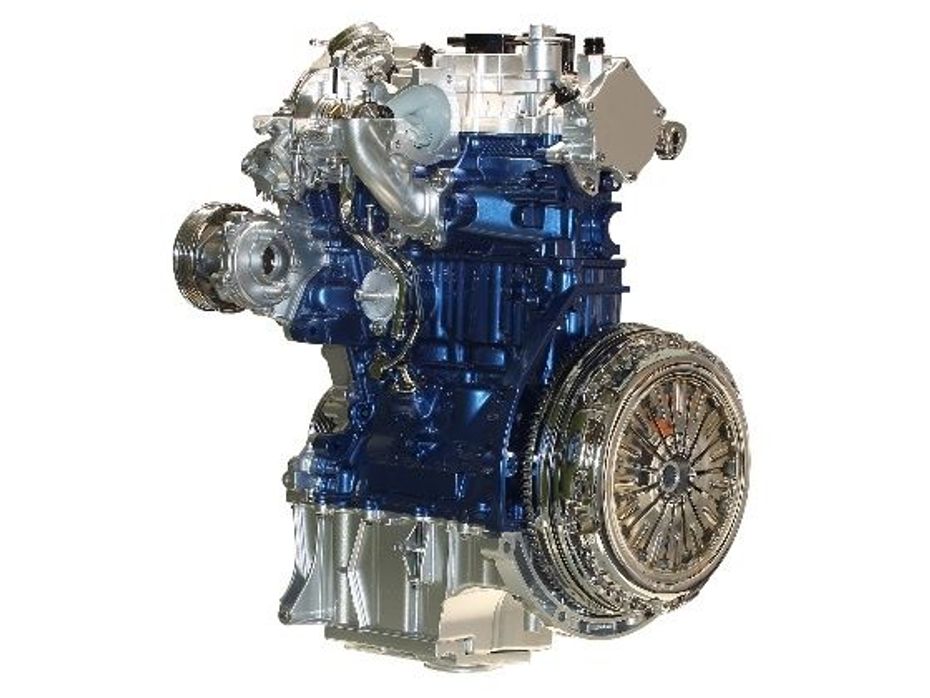
Ford EcoSport S EcoBoost: Review
- May 29, 2018
- Views : 18140


India has seen many small engines, especially from the dawn of Maruti-Suzuki where the 800cc three-cylinder single overhead cam motor first confounded and then conquered minds and hearts to show that it was technology rather than size which delivered the goods. And that in an era where the larger Fiat and Hindustan Motor mills were found to be so agricultural.
Fast forward then from 1985 to 2013 and nowadays it is hard to find an agricultural motor under the bonnet of an Indian car though some makers do try their level best to keep this line of thought from dying out but that’s not the thrust of this piece. Rather it has all been about how technology can deliver meaningfully in these days of precious resources, weight reduction, ultra low fuel consumption and even lower emissions without of course compromising on the pleasure to drive and practical appeal of what an internal combustion engine can and should deliver. Also Read: Ford EcoSport Road Test
As many engine designers from almost all car makers have been telling us, downsizing is the way to go but then just a reduction in displacement is not the answer to delivering a level of performance without sacrificing fuel efficiency. So while there is a threshold to how low one can go on displacement without losing sight of torque and therefore fuel efficiency, the adoption of less throats to quench meant a reduction in the number of cylinders but then in came turbocharging, better top end architecture to allow good breathing and with precise electronic control the whole ensemble could be made to deliver strong where it matters – in the customer minds!

This in essence is what the Ford EcoBoost engine is all about. It is right on the limit as to how one could super-downsize and yet stay relevant with the mainstream. Employing a very tightly packaged in-line three-cylinder engine displacing 999cc, it has enough in the way of impressive design details which together make for one impressive unit. For starters the long stroke approach (cylinder dimensions measure 71.9 x 82m.0mm) is one which would always produce strong torque (170 Nm in a thick strong stream from 1400 to 4500rpm) and also help in its delivery. Add to that the reduced amount of weight and frictional losses thanks to using a cylinder less going by conventional thought. What is even more impressive is that Ford hasn’t made the engine block in light alloy but has used extensive new techniques in thin wall cast iron technology to make do with a block that is light yet strong and structurally stiff. And also of course cast iron is less noisy than aluminium alloy in case one didn’t factor this bit in. Related: Ford EcoSport bookings start in June; gets special tech
The top end though is where it is all about with twin variable valve timing helping the four valves per cylinder to optimise combustion for better power (125PS at 6000rpm) but also lower exhaust emissions. In fact, it uses a very small and simple turbocharger along with direct injection to help the engine combust optimally but then with complete combustion the Ford boffins didn’t want to lose out on other areas and so in came a host of friction busting techniques to reduce the power being sapped internally. The reciprocating masses are lighter and better balanced, the crank is offset slightly to that it aligns better with the con-rod – piston assemblies to reduce side-thrust and also of course anti-friction coatings are liberally smeared on most of the moving parts. If that is not all, unlike in other three-pot mills, the EcoBoost does away with an engine balancer shaft and one might wonder why this line of thought given the inherent primary vibes from an engine of such a configuration. Again smart thought to out-think these vibes came in by way of making the clutch and flywheel assembly operate slightly out of sync to counter and cancel the bad vibes! If that is not all, there is an ingenious belt-in-oil drive system within the engine that more than halves the noise and vibration.

What this engine means in the real world can be seen in myriad ways vis-a-vis not just the small engines presently on the market but also the relevance of this engine as a striking symbol of downsizing which the world and its granny are propagating! First off in the Indian context the two engines closest in displacement to the EcoBoost are the 998cc three-cylinder K10 engine from Maruti Suzuki and the 1086cc four-pot iRDE2 unit from Hyundai. The former employs a DOHC 12-valve top end and has power and torque outputs of 68 PS and 90 Nm at 6200 rpm and 3500 rpm respectively. The Hyundai four delivers 69 PS and 99 Nm at 5500 rpm and 4500 rpm respectively. The ARAI fuel efficiency figure for the K10 is 20.2kmpl while the Hyundai is logged at 19.81kmpl. So cube for cube, these naturally aspirated engines do pale significantly on the performance front against the turbocharged EcoBoost with 125 PS on tap at 6000 rpm and a whopping 170 Nm of torque in a linear surge starting from as low as 1400 rpm and running thick and strong all the way to 4500 rpm! Factor in an ARAI fuel consumption figure of 18.9 kmpl and you suddenly find this engine transcending many segments!
It is a brave and bold attempt but it is smart thought rather than rocket science which has seen this happen. Is there a means to replicate this for even more gains by going lower down the displacement route? I am afraid that’s not possible because the Ford boffins as also those who have gone down the one-litre three-cylinder route (VW and GM are two names which come immediately to mind) recently have said that a certain volume needs to be in place to make the optimisation work. No wonder then that in the EcoSport this three-pot is probably the best heart that can beat in a small sensible package, for work and play!
Read More: Ford EcoSport Special Coverage

Ford EcoSport S EcoBoost: Review

Ford EcoSport Goes Rugged With A New Active Variant In Europe

Ford India Now Offering Extended Warranty For Up To 1,50,000km

The Ford EcoSport Gets A Slight Price Hike

Rugged Ford EcoSport Active Variant To Arrive In Europe By November

The EcoSport’s Titanium Petrol Variant Is Now Available With An...

2020 Ford EcoSport BS6: Variants Explained

Ford EcoSport Gets Dearer With BS6 Upgrade

BREAKING: Ford EcoSport EcoBoost Variant Faces The Axe In India

Is This The New EcoSport That's Headed To India?
India's largest automotive community